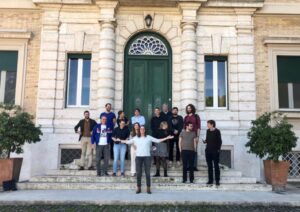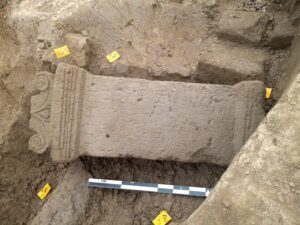About the project
Constructing the Limes (C-LIMES) is a transdisciplinary research project about borders, in particular the border of the Roman Empire, the so-called Lower Germanic Limes (UNESCO World Heritage since 2021). This project, in which partners from five academic institutions and a range of societal partners in the Netherlands collaborate, will investigate the nature of this border and its impact on the movement of goods, people, and ideas in Antiquity. We furthermore examine how the Limes has become visible as cultural heritage over time, and how it has influenced our contemporary views on borders.
Approaches to the border of the Roman Empire
We approach the Limes from the perspective of a borderland, a wider geographical zone on both sides of the Limes. As such, our study region consists of the Netherlands, northern Belgium, and western Germany. To study impact and significance of this borderscape over time, our approach is threefold. First, the Limes is studied as a divider and connector. Through a diachronic approach we map the permeability of the Limes and its influence on communities living on either side in Antiquity. By analysing various categories of material culture, distribution maps will be produced that yield valuable insights into the way goods and ideas moved across the borderland.
Our second approach revolves around human mobility and interaction. Isotope analyses of mostly cremated skeletal (c)remains and associated fauna are used to define the regionality of people and reconstruct their diet within the Limes borderland. Additional ancient DNA (aDNA) analysis of the inhumed individuals provides insight into kinship and variance in genetic profiles. Innovative is the application of sedimentary ancient DNA (sedaDNA) in Dutch archaeology. This approach aims to produce a first insight into the changing diet in the region and economic interaction through food production, in order to create a biogeography of new cultivars in the Limes borderland.
The third strand of research focuses on the rediscovery of the Limes and its reception from the fifteenth century until today. It charts the development of scientific research into the archaeological remains of the Limes and how these finds were brought into dialogue with the (newly discovered) written sources from Antiquity. In addition, we investigate how this knowledge about the Limes was discovered by a wider public and disseminated as shared – and sometimes contested – cultural heritage.. We examine how this heritage has been used in discussions about European integration, and conceptualized as a World Heritage site. A final focal point within this approach is a study of how current-day politics uses and abuses the Roman past, particularly in debates on migration.
Collaboration and engagement with society
In addition to our academic team members, our consortium includes more than twenty societal partners representing heritage and museum organizations, partners from the creative sector, municipalities, and networks of volunteers in archaeology. Together with these partners we organize events in which interested citizen scientists can participate and actively contribute to our research.
The Research Alliance with the KNIR allows us to deepen a number of our project’s key themes via seminars and courses together with the KNIR staff members, (inter)national experts, and students. It offers us the possibility return to the heart of the Roman Empire to discuss and report on the way Rome’s politics and power are reflected at the Empire’s edge, where it was potentially even more tangible than in Rome itself.
About Dr. Stevens
Dr. Saskia Stevens is assistant professor at the Department of Ancient History and Classical Civilization, Utrecht University. She is specialized in the history and archaeology of the Roman Period. Her research focuses on the significance and physical appearance of boundaries in the Roman Empire. She is currently PI of Constructing the Limes (2021-2026), financed by NWO as part of the Dutch National Research Agenda and, in addition, also leads the NWO project “Romans on the Rhine estuary” (2022-2024), as part of the call Archaeological Finds of (Inter)national Importance. Other areas of interest are Roman urbanism, architecture and urban living conditions and she has done extensive research in Rome, Ostia and Pompeii.



